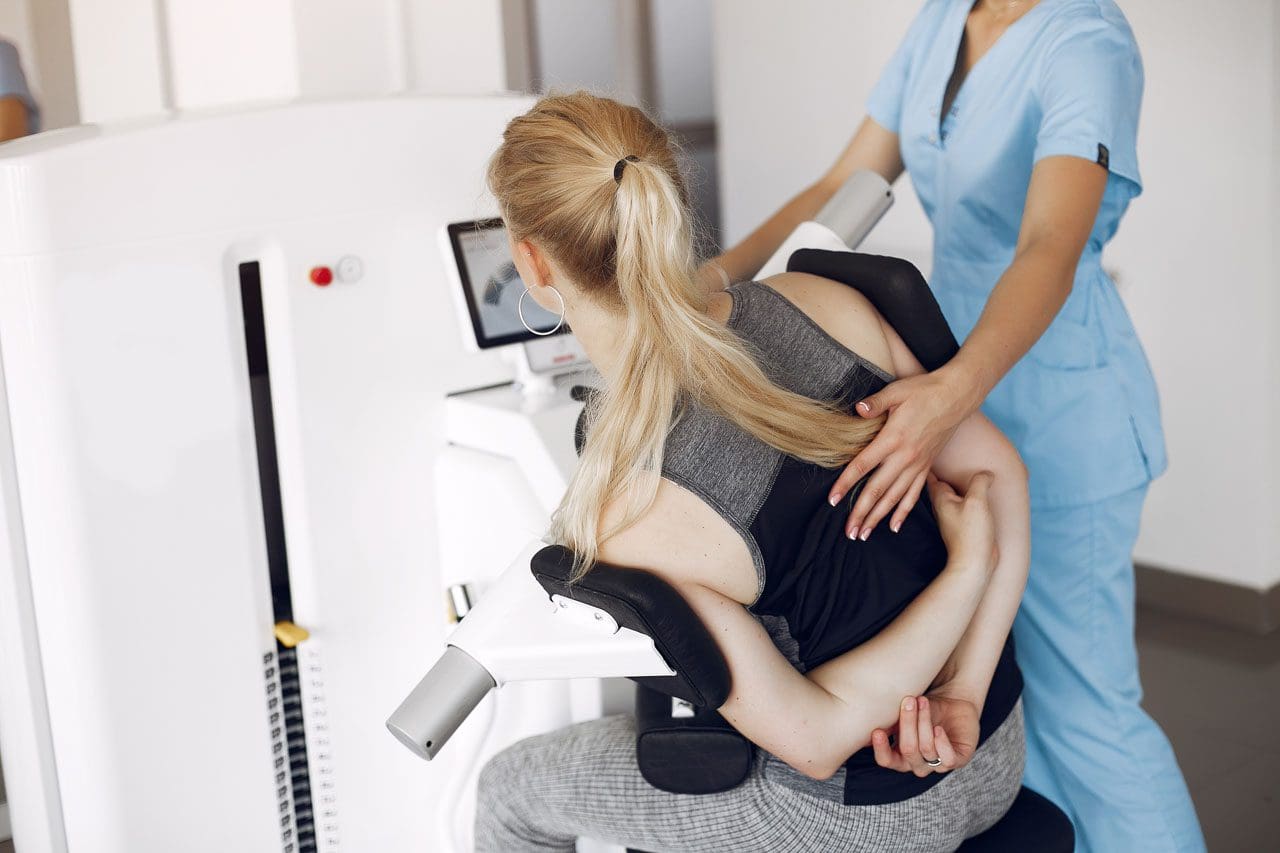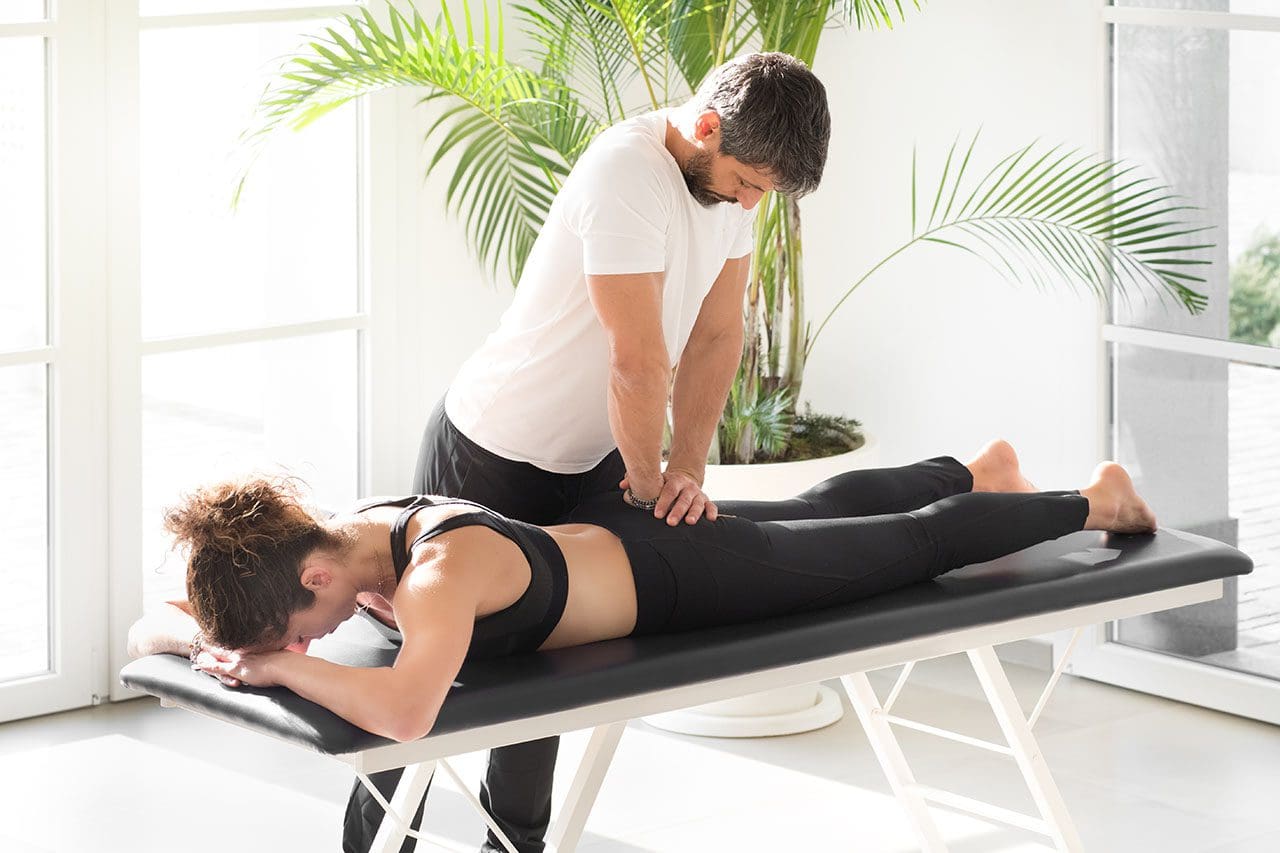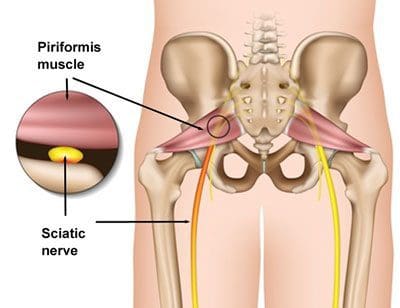
Mataupu
Menopause and Hormone Issues
Chronic lower back pain is one of the most reported musculoskeletal issues women face during menopause. About sixty-seventy percent of perimenopausal women present symptoms associated with le lava o le estrogen. ma over half in perimenopause report chronic musculoskeletal pain. Many of these studies show increasing menopausal symptoms and the correlation to chronic low back pain symptoms.Menstruation and Uterine Dysfunction
Dysmenorrhea is a uterine dysfunction that involves frequent and severe cramping during menstruation, which often leads to low back pain. The condition is classified as tulaga muamua pe lua. Both types include low back pain as a common symptom. Peraimeri dysmenorrhea starts when a woman begins menstruation and continues throughout their life. Intense contractions can cause continual and severe menstrual cramping. Secondary dysmenorrhea usually starts later and is caused by another condition like endometriosis or faʻamaʻi namu pelvis.Faamaumatika
Endometriosis is a condition that can contribute to back pain in women. Tissue that behaves like endometrial tissue begins to grow outside of the uterus, in the pelvic cavity or other areas. The new tissue responds to the body’s hormonal changes and can cause swelling, pain, spotting, and bleeding. Endometriosis growths bleed monthly as well. Without a place for the blood to go, the excess irritates and inflames the surrounding tissue. O le tulaga can cause heavy periods, chronic pain, and scar tissue build-up. Symptoms can present at any menstrual cycle stage. Pelvic pain that runs down the legs is common. Some women have also reported throbbing, shooting pain that can be mild to severe. Faʻailoga aofia ai:- Paʻu o le tino
- Paʻu maualalo maualalo
- Pain when walking or standing
- Tiga i le taimi o le ovulation
- Tiga pe a urigo
- Urinary urgency
- Pelvic inflammation
- Faʻailogaina
- Tiga i le taimi o feusuaiga
- Bowel movement pain
- Rectal pain that radiates
- Pain caused by scar tissue build-up within the bladder, fallopian tubes, bowels, and ovaries
- Lelava vaivai

Spinal Issues
The reproductive organs can sometimes contribute to back pain. However, women can also be susceptible to degenerative conditions that affect the spine’s structure. Low back pain is common with an average patient experiencing one to two episodes a year. Low back pain can start in early adulthood and become a chronic problem that can be triggered by various events or activities. Most back pain issues are resolved within six weeks. This is known as acute low back pain. When the pain doesn’t stop for more than 12 weeks it is considered chronic lower back pain.Postmenopausal Compression Fractures
solo twenty-five percent of women will go through a vertebral compression fracture of the middle or lower spine. The risks increase with age, with around a 40 percent chance at 80 years of age. Small cracks in the vertebrae can cause severe disability and limit function. Osteoporosis is the most common cause of vertebral compression fracture/s. Postmenopausal women are at an increase of developing osteoporosis. This comes from hormonal changes that decrease bone mineral density, leaving the bones open to fracture.Spondylolisthesis
This is when one vertebral body, or the thick oval bone segment in front of the vertebra, slips against an adjacent body. The result is pain or mechanical symptoms. The pain can spread throughout the spine to the hip, buttocks, into the legs, and possibly the foot. The condition can be faʻatasi, from an unknown cause, or acquired. There is some research on childbirth and hysterectomies putting women at risk for spondylolisthesis. It is common in the lumbar spine/lower back, but can also present in the cervical spine/neck region. The thoracic/middle spine is extremely rare except in trauma cases. The thoracic spine is the longest region of the spine. It is between the cervical and lumbar regions. One cause of the increased pain is longer times spent sitting in chairs that are not ergonomic. A second is being confined to smaller workspaces. The key is to get up and move around or use a sit-stand desk to alternate sitting and standing. Irregular and localized low back pain is typical for low back spondylolisthesis. The pain usually worsens when the area/region is flexed or directly touched.Piriformis Syndrome
Back pain sometimes isn�t back pain, but piriformis syndrome. The piriformis muscle is a small muscle that extends from the lower spine to the top of the femur. It can involuntarily contract and compress or irritate the sciatic nerve. The muscle helps rotate and turn the leg and foot outward. Symptoms are consistent with sciatica. It typically presents with buttock pain that shoots, aches, or throbs along the leg�s backside, thigh, calf, and foot. Tingling along the nerve along with numbness is common. Causes include:- Buttock injury
- Hip injury
- Weight training specifically the gluteal/buttock, hips, and hamstrings
- Sitting for a long time – Examples include truck drivers, desk job workers, etc.
- Damage to the piriformis muscle
- Sciatic nerve wraps around the piriformis muscle

Taulaga Felagolagomai Laulaga
Sacroiliac joint dysfunction involves inflammation of the joints, located at the connection of the pelvis and lower spine. It can present as low back or buttock pain that radiates down the leg/s. The pain worsens when climbing stairs or standing for an extended amount of time. Sacroiliac joint dysfunction can be tough to diagnose, as it is often mistaken for other low back pain causes.SI joint dysfunction causes:
- tō – the increased weight and altered movement/s can cause additional stress and wear.
- Faamaʻi pipisi – in rare cases, the joints can be subject to infection.
- gugu – the joints can develop arthritis from normal wear and tear.
- Manua Matuia – the joints can be injured from a forceful impact from a fall or auto accident.
Personalized Chiropractic Spine Treatment
Dr. Alex Jimenez's Blog Post Tuuese
O le lautele o a matou faʻamatalaga e faʻatapulaʻaina i le fomaʻi, musculoskeletal, faʻamalositino vailaʻau, soifua maloloina, ma maaleale soifua maloloina mataupu ma / pe faʻatino vailaʻau tala, mataupu, ma talanoaga. Matou te faʻaaogaina le soifua maloloina ma le soifua maloloina faʻataʻitaʻiga e togafitia ma lagolago ai le tausiga mo manuʻa poʻo faʻaletonu o le musculoskeletal system. O a matou pou, mataupu, mataupu, ma malamalamaaga e aofia ai mataupu tau falemaʻi, mataupu ma mataupu e fesoʻotaʻi ma lagolago tuusao pe le tuʻusaʻo ia tatou falemaʻi lautele o galuega. * Ua faia e le matou ofisa se taumafaiga talafeagai e tuʻuina atu lagolago lagolago ma ua faʻailoa mai le talafeagai suʻesuʻega suʻesuʻega poʻo suʻesuʻega e lagolagoina a matou pou. Matou te faia foi kopi o lagolago suʻesuʻe suʻesuʻega avanoa i le laupapa ma pe lautele pe a talosagaina. Matou te malamalama o matou aofia ai mataupu e manaʻomia se faʻaopopo faʻamatalaga i le auala e ono fesoasoani ai i se faʻapitoa tausiga fuafuaga poʻo togafitiga togafitiga; o le mea lea, ia toe talanoaina le mataupu mataupu i luga, faʻamolemole lagona saoloto e fesili ia Dr. Alex Jimenez pe faʻafesoʻotaʻi mai i matou i le 915-850-0900. Le laisene (s) Laiseneina i Texas & New Mexico *Faʻataʻitaʻiga Tomai o Faʻataʻitaʻiga
O faʻamatalaga o loʻo i luga "Tamaʻitaʻi E Maulalo Tua Paʻu Ma Mafuaʻaga Mafuaʻaga"E le o fa'amoemoe e sui ai se mafutaga ta'ito'atasi ma se fa'apolofesa fa'alesoifua maloloina agava'a po'o se foma'i laiseneina ma e le o se fautuaga fa'afoma'i. Matou te fa'amalosia oe e fai fa'ai'uga fa'alesoifua maloloina e fa'atatau i au su'esu'ega ma faiga fa'apaaga ma se tagata tomai fa'apitoa tau soifua maloloina.
Blog Fa'amatalaga & Va'aiga Talanoaga
O matou fa'amatalaga lautele e fa'atapula'a ile Chiropractic, musculoskeletal, vaila'au fa'aletino, soifua maloloina, fa'asoa etiological fa'alavelave viscerosomatic i totonu o fa'ata'ita'iga fa'apitoa, somatovisceral reflex fa'ata'ita'iga fa'amanino, fa'alavelave fa'aletonu, fa'afitauli ma'ale'ale o le soifua maloloina, ma/po'o tala fa'afoma'i aoga, autu, ma talanoaga.
Matou te tuuina atu ma tuuina atu felagolagomai falema'i faatasi ai ma tagata tomai faapitoa mai matata eseese. O fa'apitoa ta'ito'atasi e fa'atonutonuina e la latou fa'apolofesa lautele o fa'ata'ita'iga ma a latou pulega fa'atulafonoina. Matou te fa'aogaina tulafono fa'alesoifua maloloina ma le soifua manuia e togafitia ma lagolago ai le tausiga o manu'a po'o fa'aletonu o le musculoskeletal system.
O a matou vitiō, pou, mataupu, mataupu, ma malamalamaga e aofia ai mataupu tau falemaʻi, mataupu, ma mataupu e fesoʻotaʻi ma tuusaʻo pe le tuusaʻo le lagolagoina o la matou faʻataʻitaʻiga masani.*
O lo matou ofisa sa taumafai lava e tu'uina atu fa'amatalaga lagolago ma ua fa'ailoa mai su'esu'ega su'esu'ega talafeagai po'o su'esu'ega e lagolagoina a matou pou. Matou te saunia ni kopi o lagolagoina suʻesuʻega suʻesuʻega avanoa i tulafono faʻatonutonu laupapa ma tagata lautele pe a talosagaina.
Matou te malamalama o matou aofia ai mataupu e manaʻomia se faʻaopopo faʻamatalaga o le auala e ono fesoasoani ai i se faʻapitoa tausiga fuafuaga poʻo togafitiga togafitiga; o lea, ia toe talanoaina le mataupu mataupu i luga, faʻamolemole lagona le saoloto e fesili Dr. Alex Jimenez, DC, pe faʻafesoʻotaʻi i matou 915-850-0900.
Ua matou o mai e fesoasoani ia oe ma lou aiga.
faamanuiaga
Dr. Alex Jimenez D.C., MSACP, RN*, CCST, IFMCP*, CIFM*, atn*
imeli: faiaoga@elpasofunctionalmedicine.com
Laisene o se Fomaʻi o Chiropractic (DC) i Texas & New Mexico*
Texas DC Laisene # TX5807, New Mexico DC Laisene # NM-DC2182
Laisene ose Tausima'i Resitala (RN*) in Florida
Florida Laisene RN Laisene # RN9617241 ( Pule Nu. 3558029)
Tulaga Fa'atasi: Laisene Tele-Setete: Fa'atagaina e Fa'ata'ita'i i totonu 40 States*
Dr. Alex Jimenez DC, MSACP, RN* CIFM*, IFMCP*, ATN*, CCST
La'u Pepa Pisinisi Digital






